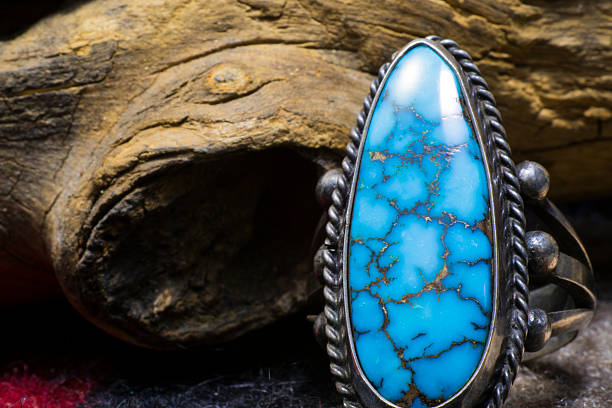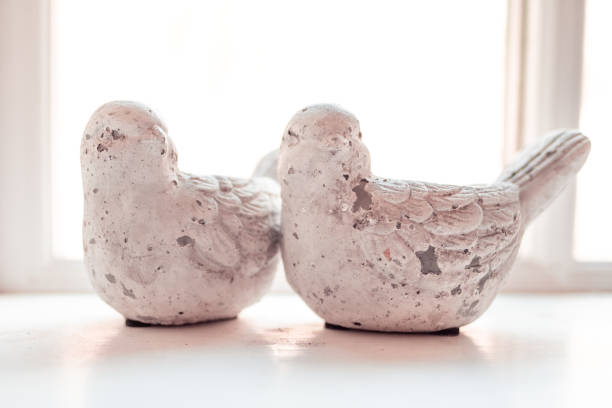I work exclusively in Australian native timbers, making a range of gift items, most featuring inlays made with a technique I have developed over many years. I make jewelry, including earrings, both inlaid and laminated, and pendants with sterling silver hooks and chains, as well as brooches and cufflinks. Also, inlaid and laminated hair clips with genuine French barrettes.
I make boxes with both fitted and hinged lids. They range in sizes from small trinket boxes (8 x 8 cm) to jewelry boxes with compartments and photo frames from 7.5 cm square up to quarto size, some with simple and others with more complex inlays.
By far, my most popular products are small ornamental birds crafted from the more spectacular native timbers, such as tiger myrtle, sassafras, and figured red gum, in the form of wrens (tail up) and what some galleries I’ve supplied have called robins (tail down).
These feature beaks and eyes made of intense black ancient red gum, which has been dyed that color by being buried in the mud of the river Murray for at least 5,000 years. I also use small amounts of the same timber to provide lines of contrast in the inlays of other pieces.
Other items include small inlaid clocks with battery-powered inserted faces and timber buttons. Most items are finished with several coats of spray-on lacquer, polished back between coats, and then finished with carnauba wax.
I also quite regularly produce a range of items on commission for Australian Woodwork, a company that has a license for ancient red gum and sells worldwide through its website.
How did you begin your business, and why?
I took up woodwork as a hobby when I was in my twenties (I’m now 79), but I really only established a business when I took early retirement from working as an arts officer with the local council at the age of 52.
I began by selling mainly jewelry and birds at markets such as the Southgate Sunday market in the 1990s, and later expanded the range of items I made and also began finding outlets with galleries and gift shops, both locally and interstate.
I now supply galleries at Yallingup in the Margaret River area of Western Australia, Maleny in Queensland, and local outlets such as Australian by Design in the Block Arcade, Touchstone Gallery in Olinda, Stonehouse at Warrandyte and Meeniyan Gallery in Gippsland.
I began my business because of the immense pleasure and satisfaction I get from working with the many amazing varieties of native timbers that Australia has to offer, especially from Tasmania, and also because people seem to be impressed with what I create and obviously want to own examples of my work.
In addition, I needed something creative to occupy me after I had given up full-time employment with the council and also something that would supply some income. However, this was fairly minimal at the beginning.
I also made the mistake of renting a factory at Ferntree Gully for a few years, which was a drain on any income I managed to make. I now work exclusively from a home workshop next to our house and find that I can make a small but steady income from sales to galleries and at regular markets – or at least I could until the pandemic closed things down.
Where does the inspiration for each piece come from?
I am completely self-taught, learning my craft from practice and experimentation over many years.
I have found this an advantage because it means I have discovered ways of achieving results and effects that are quite different from those of woodworkers who have done woodworking at school or courses in the craft.
The inspiration comes fundamentally from the beauty of the material, the grain, and the color of the multitude of different timbers, as well as the pleasure of creating objects that people find attractive and useful and are willing to pay significant amounts for. This, to me, is the highest compliment an artist in any medium can receive.
What sets your designs apart from other stalls?
My items are all made in my workshop with fairly basic equipment – a large and a small bandsaw, a belt sander, a drum sander, and other equipment. The unique inlay process I use means that much of the effect comes from the almost accidental patterns resulting from the way I combine the different woods, usually defined by the white lines of silver ash I use between the other timbers, most of which are darker or variegated colors. In the nearly 30 years since I have been operating a business, I have yet to come across anyone creating similar work to mine, and I think it is its unique quality that sets it apart and makes it successful.
What do you love most about being a stallholder at CMA?
Like at all markets, the greatest pleasures come from meeting and conversing with other creative makers, meeting members of the public, and receiving their opinions on one’s work.
What are the challenges and rewards of being your boss?
The challenges and the rewards are being able to exercise one’s creative freedom, to choose what one is going to make next, and the pleasure of achieving it to one’s satisfaction. I couldn’t really identify one biggest achievement except perhaps for being able to participate successfully on several occasions in the Tasmanian Craft Fair.
Describe your perfect weekend!
What can I say? A Saturday putting the finishing touches to articles I’m going to display at the next day’s market, an evening concert with my wife Anna at the Recital Centre preceded by dinner with red wine at their in-house restaurant, and then a sunny and successful market where eager customers keep me busy all morning or afternoon and ply me with compliments about my work.
What do you see for the future for you and your business?
I plan to keep doing what I am doing as long as I am physically and mentally able, with the expectation that my work will continue to appeal to people. At the moment, it isn’t easy to see the future too clearly, but one can only hope that, eventually, things will open up and get back to some semblance of normality.
What advice would you give to someone interested in setting up their own small business or stall?
Believe in what you are doing, go ahead and do it, but be prepared for days on which little or nothing sells. Don’t get discouraged when it happens – it happens to all of us sometimes.
How did you adapt and overcome the challenges of the past year?
With considerable difficulty. I spent a lot of time building up stock and trying alternative occupations, such as painting butterflies on rocks and leaving them under trees in the local park.





